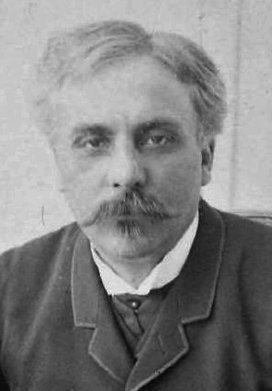|
||
|
Gabriel Fauré began his musical education in Paris where he trained to be a church organist and choirmaster, and after graduating in 1865, he earned a living as an organist and teacher. As time went on he became increasingly successful, moving regularly to more prestigious posts, culminating in his being appointed director of the Paris Conservatoire. The pressures of work forced him to retire to the countryside in the summer holidays in order to compose his music. Fauré is now regarded a a major innovator in musical composition. His works moved away from the German romantic tradition, and are characterised by outward restraint, but very subtle use of melody, harmony and orchestration. He is sometimes described as the originator of impressionist music, and he had a strong influence on his pupils, notably Debussy, Ravel and Koechlin. Maurice Maeterlinck's play Pelléas et Mélisande tells the story of two brothers, Pelléas and Golaud, who both fall in love with Mélisande, a beautiful yet mysterious girl. Golaud finds her in the forest, and is immediatley enchanted by her. He marries her, but soon begins to suspect, correctly, that she is having an affair with Pelléas. He becomes increasingly consumed by jealousy, until finding them embracing he falls on them with his sword, killing Pelléas and wounding Mélisande. In the final scene Mélisande lies dying after giving birth to a small girl. Golaud filled with grief and remorse begs her forgiveness. The Prélude describes the discovery of Mélisande in the forest. It contrasts a simple lyrical melody (Mélisande) with a second fluid theme with chromatic movement filled with passion (Golaud). The latter builds to a very dramatic central climax, anticipating the tragedy that is to occur. A horn calls near the end of the movement evokes a distant hunt in the forest. La Fileuse (the spinner) is an orchestral evocation of a scene in the play showing Mélisande at the spinning wheel. The upper strings play a moving triplet theme throughout, which suggests the whir of the wheel, and accompanies a gentle spinning song which is interspersed with darker threatening passages. The sicilienne, built from a lyrical theme in the minor mode and played at first on the flute with harp acompaniment, describes a moment of happiness shared by Pelléas and Mélisande as they recognise the love they share. It has become one of Fauré's best known pieces, and has been arranged for many different combinations of instruments. Although it seems to fit the Maeterlinck play to perfection it was originally composed for a different play - Molière's Le Bourgeois Gentilhomme. The fourth movement is a slow dirge on the death of Mélisande. It looks back to some of the earlier thematic material, notably the dark interludes in La Fileuse, and it marches steadily on with relentless inevitability. This movement was played at Fauré's own funeral in 1924. Fauré's Pelléas et Mélisande suite was performed by the Portobello orchestra on the 6th July 2019, conducted by Sam Jones. back |

